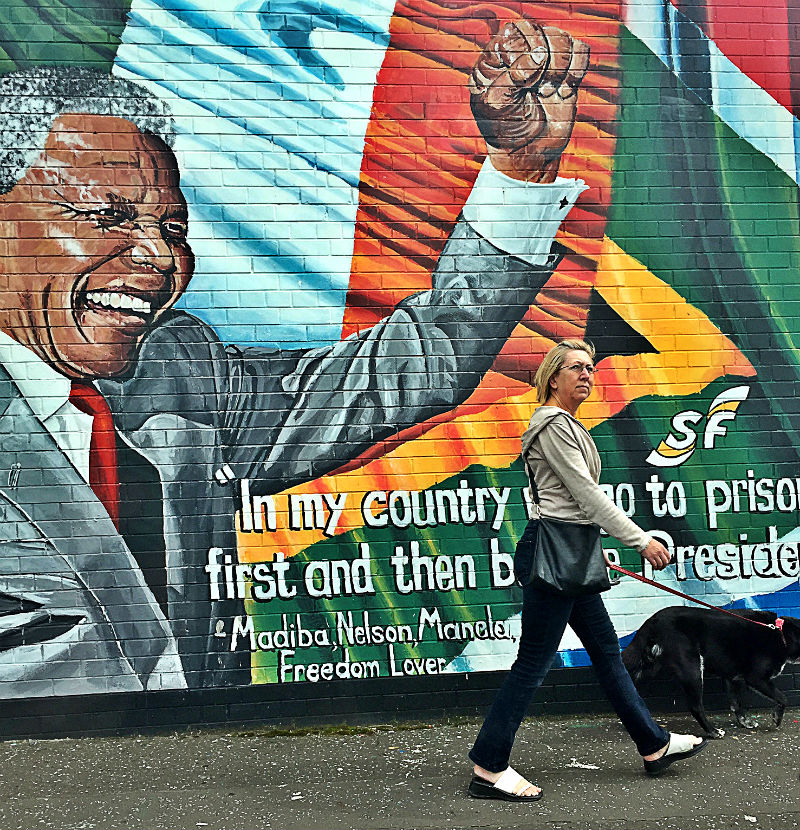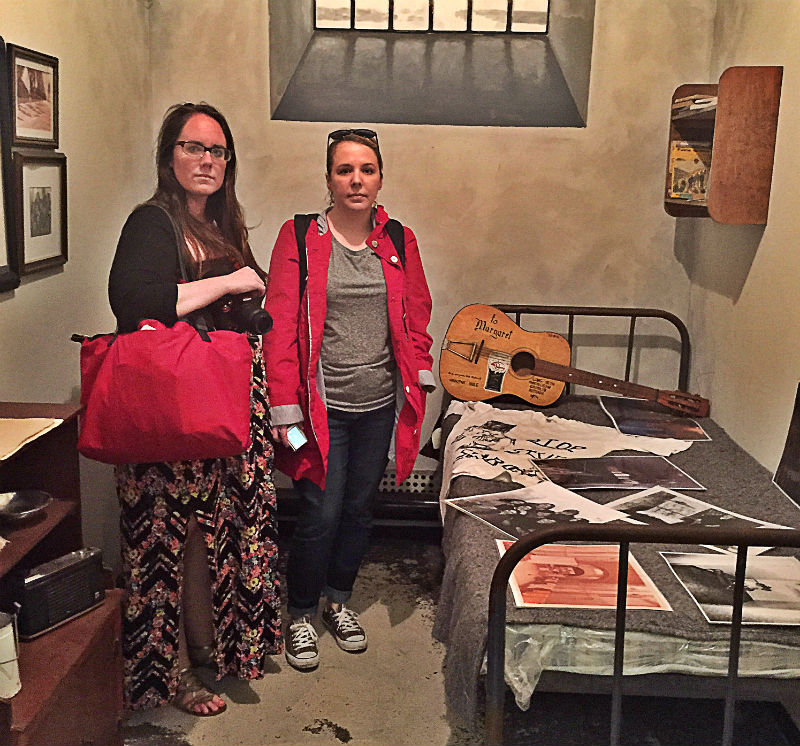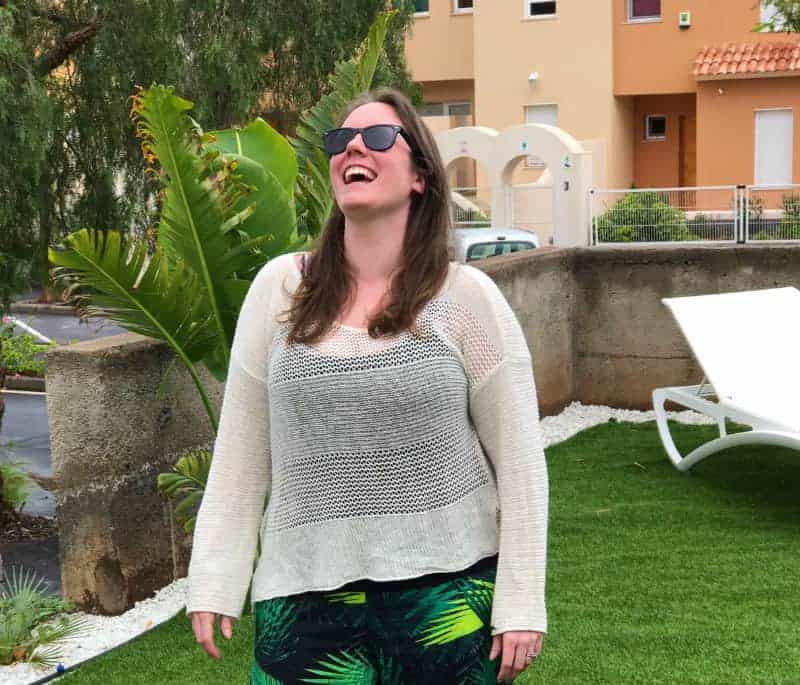This is Megan’s final installment of her experiences traveling through Belfast, Northern Ireland. You can also read Part I and Part II!
From the Peace Wall, we rounded a corner and walked through a heavy iron gate to the Irish republican side of the divide. Here, I found that the murals changed in tone and content almost immediately. While military men with guns are not entirely absent in these murals, peacemakers and global civil rights leaders take precedence. Gunmen and Red Hands are largely replaced with images of Nelson Mandela, Martin Luther King Jr, and Frederick Douglas. Calls for unity, pleas for an end to sectarianism, and requests to bring down the wall were also widespread. However, those who died during the Troubles were as prominently featured on the Falls Road side of the wall as they were in the Shankhill. But, many of the republican dead were painted almost like saints, which gives the onlooker the sense that the neighborhood sees them as brave and selfless martyrs to the cause. These murals are largely colorful, inviting, and filled with the symbolism of peace and rebirth.
Turning onto the Falls Road, I noticed that the neighborhood seemed a bit sturdier and more orderly, but I personally didn’t feel quite as welcome. Not to say I felt welcome (or unwelcome, really) during any part of our tour. We were largely ignored, as city tourists are ignored while they gawk at and take pictures of attractions you pass every day. But, in the Falls Road, we were noticed. Just noticed, that’s all. But, I think the few stares we got were a healthy reminder of just what we were doing: touring the trauma and conflict that defined many lives in the area. Eileen also pointed out that people would probably get a similar glare in parts of Boston (particularly if they were blocking the sidewalk, like we were, or wearing Yankees gear).
Our tour guide Gerry took us to a Troubles Museum in the Falls Road neighborhood that is run by volunteers and relies on donations from family members of the deceased and the formerly incarcerated. It included a replica of one of the cells in Armagh, the women’s prison where confirmed and suspected female IRA members were incarcerated. There were also handicrafts that republicans made while in jail, photographs, flyers, and pieces of clothing belonging to prominent IRA and PIRA members. This included a fur-trimmed jacket worn by Mairéad Farrell, a volunteer in the Provisional IRA who was killed along with two others by the British Army in Gibraltar in 1988.
We finished our tour in front of a famous mural of Bobby Sands, a locally elected MP that died during the 1981 Hunger Strike held at the Maze Prison. He became a lasting figure in the fight toward civil rights in Northern Ireland and is often used as a symbol when discussing the Troubles. (For a bit more on Bobby Sands, check out his diary or the film Hunger by Steve McQueen. It is tough to watch, but it is well worth it. Also, Michael Fassbender is in it, so that helps.)
As we sat in our black taxi, which was actually white, at the end of the tour, Gerry showed us pictures of what the street we were on looked like in decades past. He also described his experiences growing up on the Falls road. He told us how his mother installed an iron gate at the top of her stairs to help protect her family from home invaders. He also told us that many in the neighborhood replaced their wooden doors with metal ones so as to prevent them from being easily kicked in or shot through. He showed us pictures of funerals where British military personnel were perched on high, aiming automatic rifles at mourners lined up in somber formations, waiting to say goodbye to the dead. We also saw the aftermath of bombs and brawls. The transformation is incredible really. The neighborhood is quiet. Orderly. Clean. Free of debris. And while the scars from the Troubles are still visible, they are healing.
Finally, Gerry had to get to his daughter’s birthday party, and we were taken back to our hotel to process everything we had just witnessed. While traditional tours take about 90 minutes, ours took almost three hours. I definitely recommend the shorter tours for those not familiar with the history of the conflict in Northern Ireland. It will be a great introduction to a very complex situation and you will be able to see many of the murals and the Peace Wall along the way. For those who already have an interest in the conflict, I would recommend one of the longer political tours. They go more in depth and allow you to explore the conflict and the area more thoroughly.
I have to say, that no matter which tour you choose, the things you experience will stay with you. I have been lucky enough in my life to not have been in many conflict zones, but seeing the lasting human tragedy that accompanies sectarian violence helps you to look at it in a different way. Getting both sides of the story also helps to add humanity back into both sides of the narrative. Conflict inscribes itself in the landscape and gets into people’s bones. We would do well to remember that, and a black taxi tour in Belfast can help by giving you more insight into a devastating conflict in one of the United Kingdom’s major cities.






Join the discussion One Comment